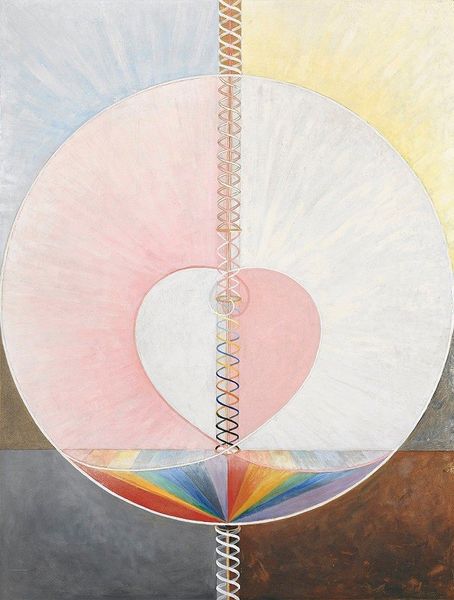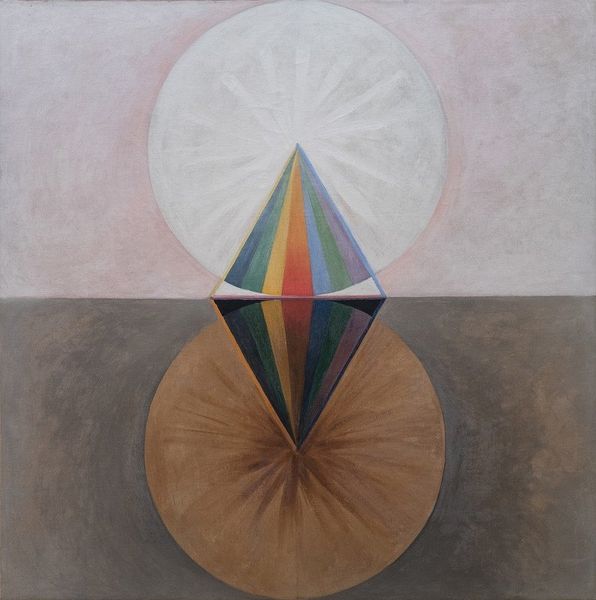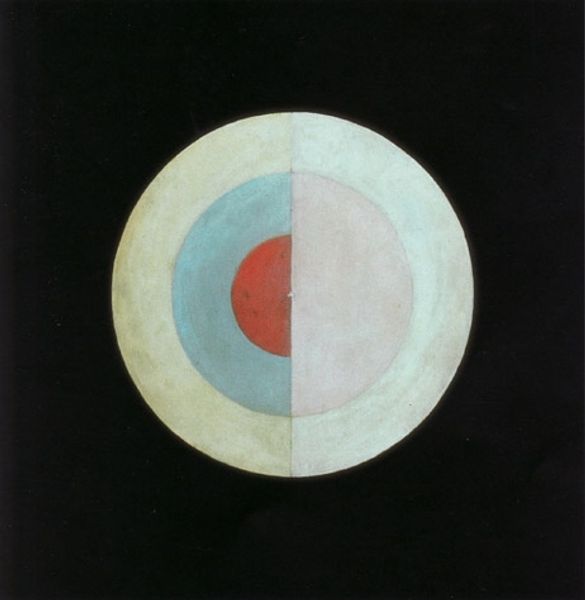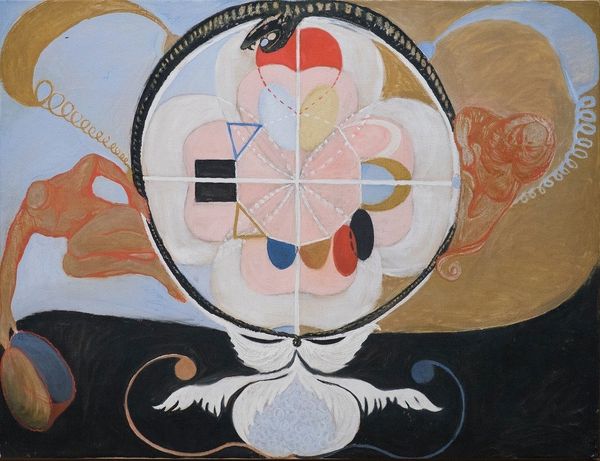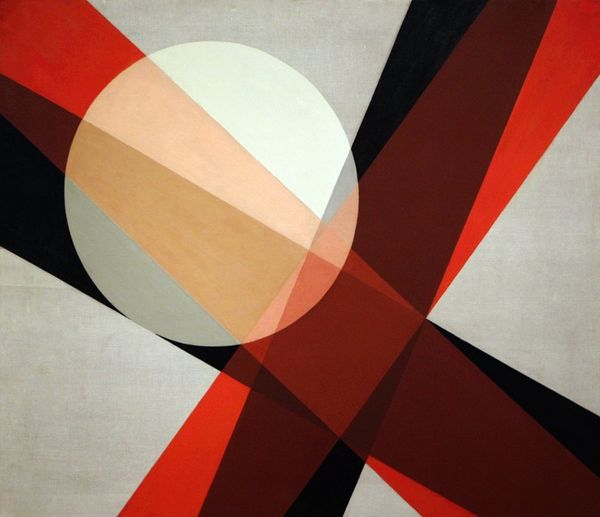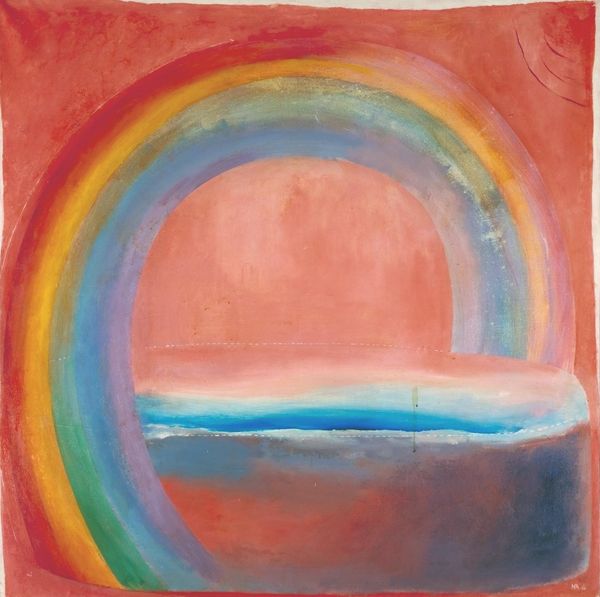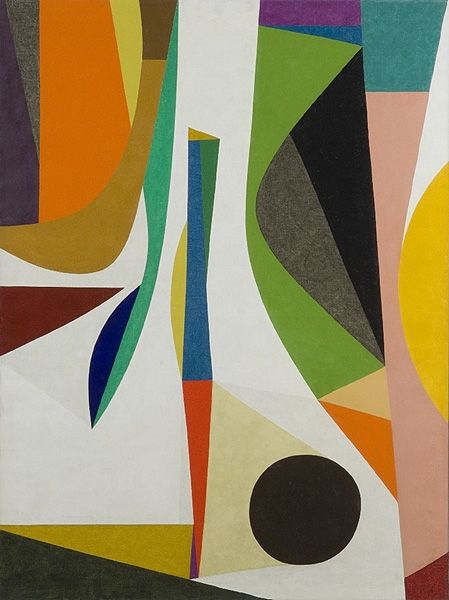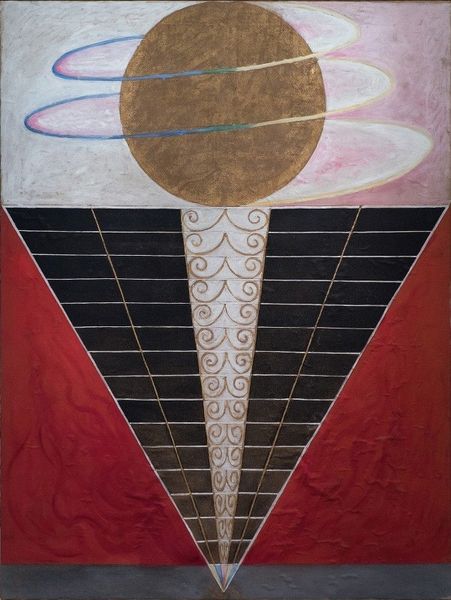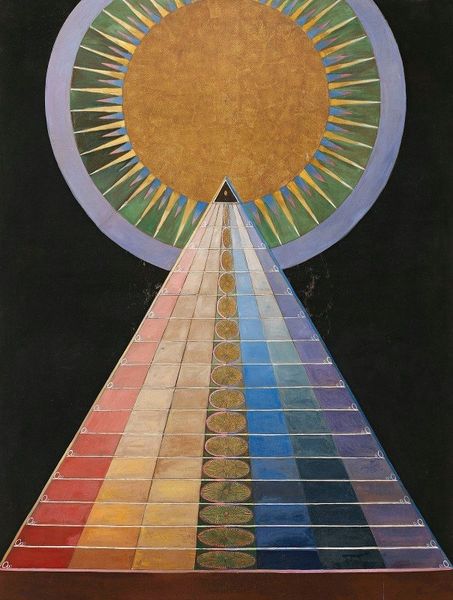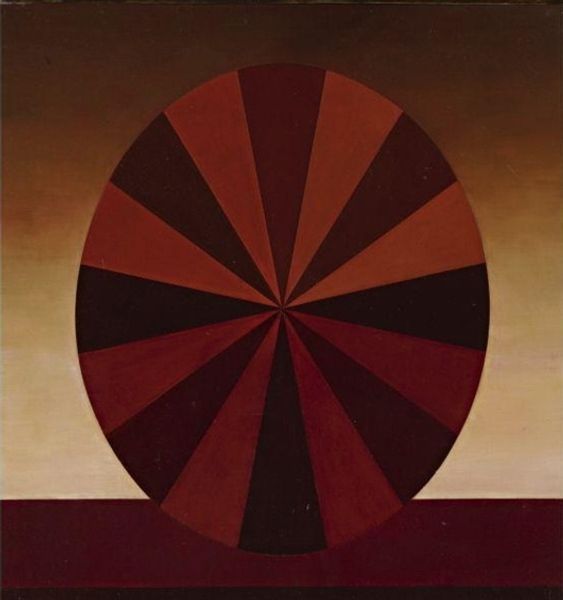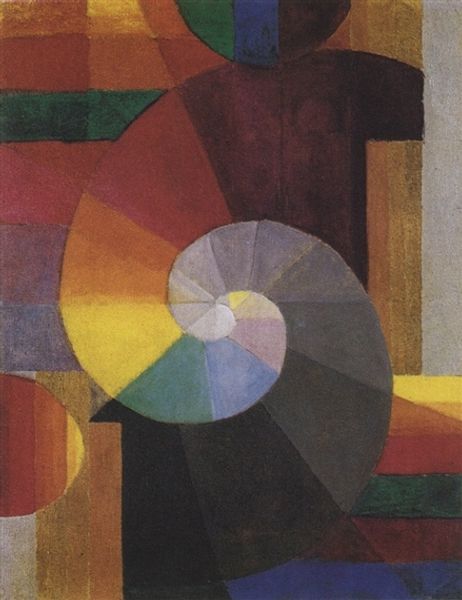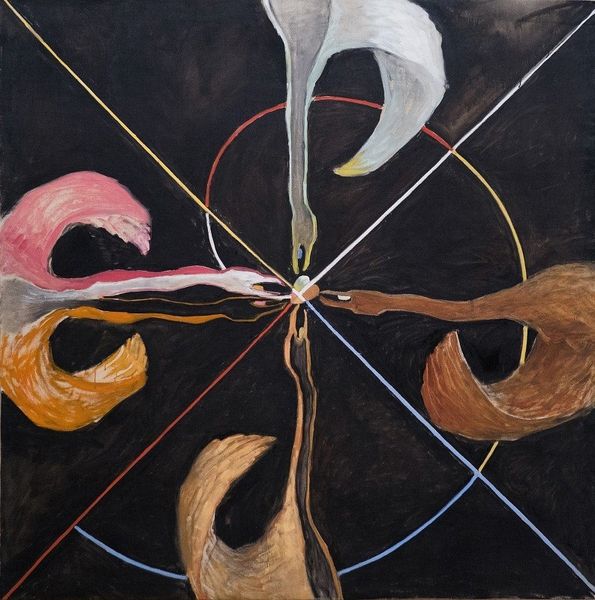
painting
#
art-nouveau
#
non-objective-art
#
painting
#
abstract
#
form
#
geometric
#
line
#
symbolism
#
decorative-art
#
decorative art
Copyright: Public Domain: Artvee
Curator: Here we have Hilma af Klint's "Doves No. 2," created in 1915. Editor: My immediate reaction is that it is soothing and yet surprisingly complex. The pale color palette coupled with sharp geometries create an odd sort of tension. Curator: Indeed. Klint was deeply interested in spiritualism and theosophy, imbuing her abstract forms with symbolic meaning. Doves, of course, often represent peace, the soul, or even messages from the divine. The radiating colors remind me of a halo or otherworldly light. Editor: Right, but considering its creation, I see those colors as literally constructed—pigments meticulously mixed and applied, each hue dependent on the labor and material reality. There’s something poignant about the material process to depict ethereal concepts, a constant tension. What do you make of the division between the quadrants—red, lilac, pink, and black? Curator: Well, given her other works, this might reference stages of consciousness or spiritual planes, with the black representing the void. She used colors to denote specific spiritual frequencies. It’s like she's mapping invisible worlds through the tangible means of painting. I understand she approached these as channeled messages. Editor: Which circles back to material reality: someone chose those paints, mixed them, applied them to the canvas with a conscious action! What type of paints do you think she favored? Where did she source them during wartime? The unseen hand matters more than just that of the spiritual kind, I think. Curator: That's a valid point, and brings a certain weight to such imagery. The symbolism then rests on a tangible foundation of labor and choice, the artist bridging realms with brushstrokes. Editor: Exactly! So what initially presents as transcendent gains an earthly anchor. It's those subtle paradoxes that make her art resonate so powerfully, even a century later. Curator: Precisely! This piece urges us to reflect on both our earthly bounds and perhaps also consider something beyond what’s merely perceived. Editor: To reflect both on what we make and how it reflects on us.
Comments
No comments
Be the first to comment and join the conversation on the ultimate creative platform.
